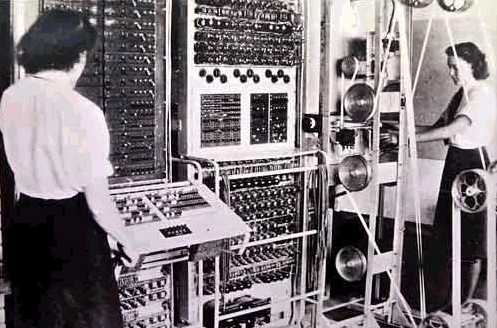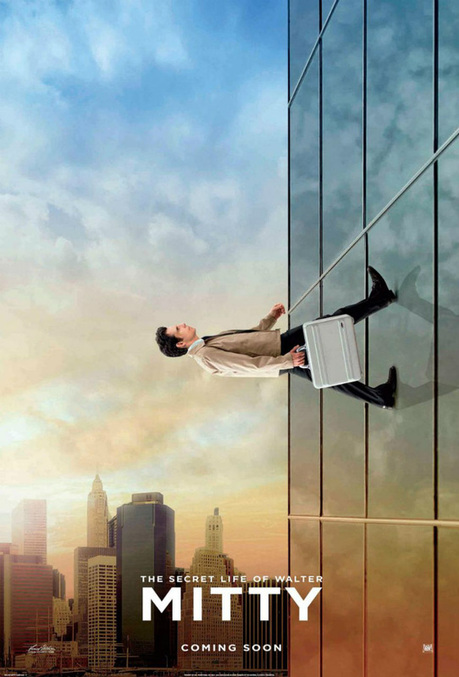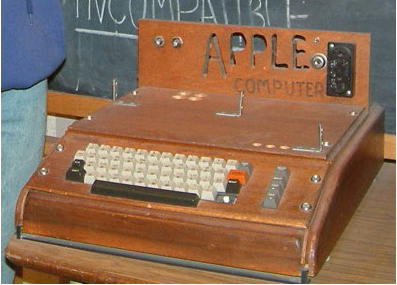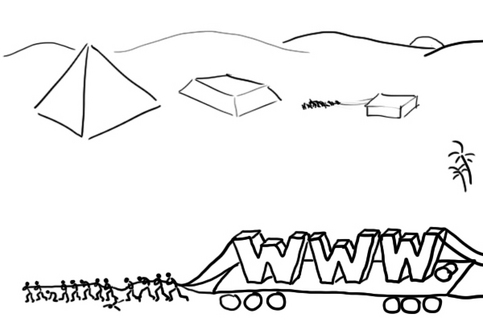|
Now before you assume I’m one of those who detest, or are petrified of technology, I’m not. I work on a laptop/desktop, browse online, giggle at Twitter, waste time on YouTube, and yawn at LinkedIn. I even do all this on my phone. But increasingly, it feels like I’m trying to run a marathon alongside a cheetah. No matter how many warm-ups I do or how much water I drink, it feels like it’s always miles ahead, somewhere on the horizon, while I’m gasping, clutching my stomach, stumbling alone crying, “Wait up!”. But technology doesn’t give a shit. It keeps sprinting further, a wise and evil grin on its face.
A few years back I got a smart phone. In those days they had a QWERTY keyboard. You need to have fingertips the size of a two-year old to type fast on those. Incidentally, most two-year olds do type faster than me. Nevertheless, with practice and patience I became fast and quick at typing, even with my fat fingers. The moment I was really good at it, everyone got a touch screen phone. One day I was buying tomatoes when I had to message someone. The bhajiwalla cracked up watching me struggle. “Madam, smart fone le lo! (Madam, get a smart phone!)” He waved his sleek golden iPhone at me. I became as red as the tomatoes and upgraded the next week. Now I’m happy with this touch screen business, but I’m struggling to keep pace with the apps. Companies suddenly decide they will shut down their websites and provide only the app. Every hour some app or the other needs an upgrade, and cries for attention, like an annoying baby with loose motions. The other day I was talking to a friend about how we used to chat over landlines. Her 15-year-old cousin was in the room, playing some video game on his phone. He overheard us and looked petrified. Turns out, he thought landlines were the cousins of landmines, and we used explosives. Now that’s what mobile technology does to people’s brains. It’s called a smart phone because it’s often smarter than it’s owner. And it’s not limited to phones. For some reason, Gmail will keep twiddling with their user-interface. They say it’s for ‘improvement’, but it sends people like my mum into a flap. By the way, I’m now a Google Help Centre. I spend hours answering questions like this: “Where has the password space gone?” “I can’t find Drive? Where did they put it?” “How do I see this attachment?” “Where did reply-all go?” “What is the green circle near my name?” I keep reassuring mum that a computer is a) a machine b) does not think but only follows orders and c) will never bite her or explode. I want Google to either give their employees something better to do, or pay me as a Help Centre. I started using a computer for work in 2001. Floppy disks were on their way out, and compact disks were on their way in. That was the last time I was actually riding the crest of the technology wave. After I had a massive collection of CDs, they vanished overnight and were replaced by the USB drive. And then they made USB drives so tiny, that I was forever losing them. So I started swallowing them for safekeeping. All my work is saved on little USBs somewhere in my intestine. It couldn’t be safer. Passwords have become tricky fellows. They can no longer be sensible words like ‘woof’, or ‘password’. Websites prompt me to use my great-granduncle’s middle name, the date of the Crimean War, then type it all backwards with random capitalized letters. Besides, we’re told not to keep the same password across different websites. I’ve been working on my very own Encyclopaedia of Passwords, and I’m on Volume 3. I suggest you do too. Now of course, everything is ‘in the cloud’. All our words, photos, thoughts, opinions, lives, are floating in one massive nest somewhere in the sky. This should make things easy, and it does, to a large extent. I’m just waiting for the day we can upload our brains to the cloud. But I suspect that some people (like that 15-year old I told you about), already have. Also published @medium
0 Comments
Today I saw The Secret Life Of Walter Mitty. A lovely, moving film, based on a short story by James Thurber. It touches many topics, directly and indirectly. Millions of people spend their lives behind a desk, never striking out on their own, never taking a risk, living lives of soul-crushing anonymity. But that’s not the issue I’m talking about. No ma’am. The movie shows the death the printed version of Life magazine. From Life in paper, it becomes Life dot com. Behind that not-so-smooth transition, many lives (pun unintended) are turned upside down by the heartless, relentless march of technology. It takes many people to make a magazine, or for that matter, any published material. Most people never understand the pain, handwork and joy that go into creating something, especially something that will be printed. Because print has an air of finality. It can’t be coded to make a correction later. There is no option to upload a new file. Written in ink equals written in stone.
Because of print’s highly demanding nature, there are many different people, each a vital performer, involved in the art of printing and publishing. Did you ever guess that there is someone like Walter Mitty, sitting in his dark room of negatives, sifting through hundreds of little images? He knows them like old friends. There is someone who colour corrects, sharpens and touches up every single image you see in any publication worth its ink. There is someone who composes the pages for print on the offset machine. Each of these people are small cogs in the larger machine. Individuals with expert, specialised knowledge. Unless you work directly with them, there is no access to that amazing tradition and well of knowledge. They never get much credit. The magazine always stands between them and the viewer, like a wall. I’m not bemoaning the rise of digital media, far from it. I love the internet, and all the information, entertainment and cat videos it houses. I’m only wondering if we are losing a entire generation of people, and with them, the knowledge and skill they had, for all time. That knowledge is of no use to us, for sure, but their stories deserve to be told. Walter Mitty tells us one such story. You can see Life online, with more photographs than ever before. But if you hold a Life magazine in your hands, you will see so much more. Behind each image, you can see a quiet person, staring at photographs for hours, checking their quality, so that you gasp wow!, and turn the page. A great visionary, dreamer, and doer of our time has passed on. Though he is no more, he is forever more. Working on a Mac everyday, one can't help but just be in awe of the man who created these marvelous machines. Apple products are more than technology, they are a way of life. A better way of life. A way towards excellence and perfection in everything. Few people had the guts and the gumption to strive for such perfection in a cynical, mediocre world, defined by bottom-lines, but Steve Jobs did. And in that, he inspires people everyday. If we can even be one-tenth of what he was, if we had such drive, such single-minded passion, such attention to detail, if we all did our work with such a quest for excellence, the world would be a better place. We would work for the joy of creating something nearly perfect.
From the black apple subtly placed at the bottom of the screen, to the serene, snowy keyboard, to their mysterious inner workings, Apple products are all the vision of a person who made the impossible possible. He made technology a sheer delight, a pleasure, a thing of beauty. He enabled the machine to truly become an extension of us, seamless, intuitive, and most importantly, he put the joy factor into the littlest of things. I have had the good fortune of working on different generations of Macs. The first one I had was an iBook G4, a small, 13 inch delight. Then I was lucky to get a good second-hand MacBook Pro in 2007, which is still going strong. After that the iMac and now the big daddy, the 27 inch Mac with its magic mouse, which is, well, magical. So many times, I have discovered something new on the Mac, and it has made me smile, or go "Wow, they actually thought of that!" Steve Jobs ensured they thought of everything. Every unvoiced need, every unspoken desire that's swimming around in a user's brain, is addressed. Yet, its never intrusive, ugly, or in-your-face. No icon is too small, no detail too unimportant, to warrant absolute attention. Everything is honed to perfection. Apple knows what you want, when you want it, when you need it. Steve Jobs is the mastermind who brought science, technology, art and beauty all together in his too-short lifetime. He redefined our way of working, connecting, and thinking. In the computer world, he made that evolutionary leap, and the best part is, he still enables millions of others to leap with him. Yesterday, when I heard the news that Steve Jobs had died, I couldn't believe it. We can't see our heros fall. I know he was suffering from pancreatic cancer, but death is always sudden, and we are never prepared for it. Maybe Steve Jobs is gone, but in many ways he hasn't. Every time I click on iTunes, or hear the signature Mac start-up 'ahummmmmmm' sound, I'm reassured, he still lives somewhere. RIP Steve Jobs I don't know what it is, but spelling and grammar mistakes seem to be on the rise. It could be the auto-correct in Microsoft Word and Google that's pampering (read spoiling) everyone's language benchmark. It could be just sheer laziness, or too many distractions around us. It could be the falling standards of education. It could be the rise of digital devices. We still don't know the real long-term implications of all this technology around us. If mobile phone waves are killing sparrows, they might be messing with our spelling skills too.
Speaking of mobiles, we can definitely dump some of the blame on the mobile phone and smsing. I love mobile phones and technology. Bt myb thts y we all rite like dis now, evn n collg. Ders no time. I hv frgten de real splings of tings. I also rite in rely shrt sntnces nw. Dis proves we can read ny wrd easly. But we can't use language like that in printed/published work (not yet at least). Language standards, in India can be surprisingly low in places where they should be high. Pick up the Times of India. On any given day, you can usually find one spelling plus one grammar mistake, and you won't even have to read the entire paper to discover them. Errors are especially rampant in the supplementary paper such as Ahmedabad Times. Surprised? Don't be. Recently, someone pointed out a spelling error in a Penguin book. English is definitely not the easiest language to master, with more exceptions than rules. The er and the ar are often confused. "I went to collage." (You couldn't have gone to a work of art). Some errors of course result in pretty hilarious situations. Recently we witnessed the 'Osama/Obama is dead' situation. A slip of one letter can mean something drastically different. Imagine the "Diving Mother that helps one in time of need." (Divine became a water sport). The slips between s and c are countless. Receive and abscess can deceive us all. And you might want to discus something or throw the discuss. Viscous can be vicious to spell. You are pretty likely to find some mistakes in this post, if you read carefully enough. Now I haven't done many sites, but the amount of misconceptions out there are astounding. Here's a few.
1) A site can be done in a day: Yes a few sites can perhaps be done in a day, but don't expect anything great. A website is not a blog. 2) No one reads: This is a classy one, one of the oldest in the book, and is genuinely and tragically believed by several designers too. That's why a lot of content out there sounds like blah blah blah. People can't really get solid information and facts from blue rectangles, moving stars, or purple stripes. Even photographs have their limitations, that's why they come with that little thing called captions. Words matter. And if you think they don't, you may have to eat your words. They aren't even that tasty. 3) Only look and feel matters: The term look and feel is frequently applied to any kind of visual design. This is like applying band-aids to cure jaundice. It just doesn't work. If the design is weak, all the surface cosmetics just won't help. And websites run way deeper than the page you see. 4) Interactive is cool, hep and in: Interactive is a word that should be banned (more on banned words later), along with other terms such as look and feel, cutting-edge, innovation and creative. These words have become as generic as 'nice' and 'good'. These poor words meant something once, in a glorious past, but now their value has dimished, and they are joining the ranks of 'jargon'. Interactive could mean anything. You and me talking is interactive. Interactive site may not equal functional site. ("This site is Awesome! But I've been looking for the Home page since yesterday.") 5) Flash is best: Steve Jobs doesn't use Flash in any Apple products. That says it all. Still looking for more proof? It makes things slow, provides pointless animations, and doesn't really have any function online. Out of 1000 websites using Flash, only one really probably needed it. It also looks like the website was created in 1742. BCE. ("I designed this site when Rameses II was building pyramid 3.") 6) Everyone uses the internet now: That's in a world where 'everyone' is 22 years old, wears Levis and eats at Subway. Thankfully, we don't live there yet. The real world has many forty-plus people who are not completely comfortable with the internet. Many small-town people may not be using it everyday. The worst mistake a designer can make is to assume everyone is just like them. Internet users are like underwear users. They can be anyone, anywhere, and you got to make something that is comfortable for all of them, however diverse they are. 7) Crack the home page and you are done: That's why the web is littered with home pages that are ornate, flashy, 'interactive', non-functional and look nothing like the other pages of the site. Inside pages need to be as functional and friendly as the home page. A home page needs to reflect the rest of the site without charging at you and knocking you flat with 1200 links. Or knocking you down with nothingness. Happy website-ing! What's the biggest difference between working by hand (illustration for instance), and working on the computer? It is the absence (or presence) of Ctrl Z. When you draw by hand, you can't undo things easily. The thing drawn remains drawn (dammit!).
The Ctrl Z (or undo option) has changed the way we work and the way we think. Since everything can be undone, sometimes nothing is done very seriously. On the other hand it emboldens us to try new things, however stupid they may seem. Ctrl Z is forgiving. It tells you, you are human, you can do it again, don't sweat it. When you work by hand, you are slower and surer, because you have to be. It is old-school. Working by hand takes the examination first and gives you the education later. If you fail, you start all over. Ctrl Z has taken the edge of drawing. It has given us a plan B. Ctrl Z (Command Z) is a state of mind, which becomes a whole way of working. You can take three leaps forward, because you know that you can always reverse in minutes. Ctrl Z has created a culture of impatience, but also a culture of limitless experimentation. The digital camera has been the Ctrl Z culture of photography. Previously, people used film. It had to be loaded, used, wound, spooled, developed, fixed, and finally printed into a contact sheet. The long process ensured that we carefully composed our shots, and only took a shot if we were pretty sure that was what we wanted. You ended up with photos that were fewer in number, but better in quality. With the digital camera you may shoot hundreds, and still may not turn out with a great one. That's because we shoot without thinking. Ctrl Z has made us (among other things): 1) Fast 2) Exploratory 3) Indecisive Since humankind is at that incredibly exciting stage of leaping from the Gutenberg era to the iPad era, both eras stand to gain the best from each other. And in the process both are evolving almost faster than we are. In this day and age, we can't imagine a designer without a computer. It's almost impossible to function. Unless the designer is that rich or famous that she/he has an army of design slaves to execute their design ideas. And even then they will need the computer for basic communication. Still, there are extremes even in this.
Recently I had the opportunity to meet a German professor, who was trained at Ulm. He uses Indesign in a very different way. He actually codes the software to do exactly what he wants, when he wants it, so there is very little manual work. He believes that it is a machine, and hence built for the level of precision that we humans can never master. The human brain/hand is always liable to make a mistake. So why not use that precision to advantage? He rarely places objects manually in files, but has trained the software to carry out commands, all purely mathematically. The workspace looks different from a conventional Indesign screen. Of course, he can do all this because he has miles of experience behind him, is a true master of the grid, and understands coding and computers. It does make sense, to actually make full use of the computer as a machine. He gives the commands, and Indesign obeys them, laying out the publication. The computer is his slave. At the other end of the spectrum are some students of typography in Jaipur. A friend visited them recently. There are a few in the class who have never worked on a computer before. To the extent that a couple of them don't know of the very basic computer interactions. For instance, they had no concept of a drop-down menu. The teacher first had to teach them that. It is akin to teaching a student how to hold a book, open it, or how to use the pencil. This means that we take our relationship with the computer for granted. We intuitively know where the drop-down menu is, where the buttons are, and we can react accordingly, without thinking. But for a newbie, who perhaps has never worked on a computer, it can be learning from scratch. The computer has become the tool most fused with the human brain and hands. But it still can't substitute the real tool of the human mind. Designers need to develop that tool first, to make best use of other tools. Only the intellect can think of ideas, concepts, and weigh them. Creative thought comes from humans, not machines. Microsoft Word can't write the Ramayana by itself. Working on the computer should not become working for the computer. |
Archives
June 2018
Categories
All
LinksThe New Yorker Old Blogs |




 RSS Feed
RSS Feed
